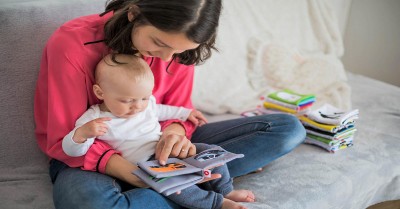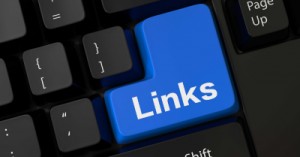The Early Years Learning Framework outlines a set of eight pedagogical practices for educators to draw upon to promote children’s learning. These practices range from macro aspects like building relationships and curriculum decision-making to daily interventions like teaching and learning. The following article provides information on each of the 8 Practices and examples of how to implement the eylf practices into your service.
-
Holistic Approaches
There was a time when children’s education used to prioritise academic learning of the childlike literacy and numeracy skills over their physical, artistic, social and emotional development. But all that has changed with the world realising the need for a holistic approach to education that gives equal importance to the emotional, social and physical growth of the child besides the intellectual.
Strategies To Implement Practice 1
To implement this approach in daily practice:
- Use indoor materials, playground equipment and free outdoor play to foster the working of children’s limbs, gross and fine motor skills, sensory organs, hand-eye coordination and other such physical faculties.
- Incorporate paint, colours, music, fabric, loose parts, objects and elements from nature to nurture the child’s creativity and sense of wonder, curiosity and imagination.
- Facilitate group play, pair activities, and buddy walk so that children get opportunities for developing social skills like collaboration, negotiation, planning and problem solving
- Use stories, songs, rhymes, art, and projects to teach emotional skills and self-regulation as well as literacy, numeracy, science and other subjects.
- Design projects and activities to teach curricula concepts to lower emphasis on worksheets and written tasks.
- Engage children more with the natural environment through nature walks, outdoor play and gardening or composting projects; such activities will not only help them learn about soil, plant growth and seasons but also fosters a sense of responsibility to the environment and its long-term future.
- Involve families of the children by inviting them to give talks, participate in children’s programs and volunteer for outdoor activities or school trips.
-
Responsiveness To Children
Educators’ practices can result in learning for children only when they are authentically responsive to the words, thoughts and actions of all children – irrespective of interests, strengths and abilities. The other aspect of educator responsiveness is welcoming varied cultural traditions and ways of knowing, the multiple languages spoken by some children, particularly Aboriginal and Torres Strait Islander children, and the strategies used by children with additional needs to negotiate their everyday lives. However responding does not only mean understanding and validating – for children to learn, it is imperative that their evolving ideas and interests are not just noted, anticipated and analysed by educators but also challenged and further extended through open-ended questioning, the use of provocations and feedback.
Strategies To Implement Practice 2
- use of spontaneous ‘teachable moments’ to scaffold children’s learning; for once a child recognizes a specific letter, you can teach the sound that it makes and then move on to words that start with that sound.
- Development of observation skills by carefully listening to children’s questions and conversations for cues on what interests them or what they are curious about.
- Collecting children’s questions like “where did dinosaurs go” or “what did dinosaurs eat” to set in motion inquiry-based learning wherein children are encouraged to question, investigate and draw their own conclusions through hands-on activities like projects, experiments and outdoor trips.
- Noting down of what children are learning through different activities while connecting to EYLF Outcomes.
- Adopting a flexible approach in your play and learning environment so that you can follow children through their dynamic interests and inquiries.
-
Learning Through Play
Play is the natural activity of children which allows them the sheer pleasure of just being. And yet, even the immersive experience of play incorporates different ways the child understands and explores their surrounding world. As children discover, create, improvise and imagine, play provides opportunities for the development of different faculties – sensory, cognitive, linguistic, social and emotional. For example, the EYLF explains that “When children play with each other, they create social groups, test out ideas, challenge each other’s thinking and build new understandings”.
Strategies To Implement Practice 3
- providing a stimulating environment that engages the different senses of the children with varied sensory materials and offers access to equipment or tools like blocks, nesting boxes, mirrors that elicit wonder and questions about cause and effect
- planning various artistic experiences that allow children to use paints, crayons, colours, fabrics, prints, clay, natural materials and other materials to create meaning and communicate ideas.
- creating opportunities for pretend to play wherein they use drama, stories, music, dance, and rhymes to role-play different characters and settings, whether related to the real world, like a doctors clinic or imaginary like a flying on a magic carpet.
- planning physical play like playing tag or catching the ball for children to use fine and gross motor skills, manipulative play like threading beads and sorting colour cards to practice hand-eye coordination and dexterity as well as construction play like building sandcastles or furniture forts to practice problem-solving scenarios, like how to build a bridge with sticks over a mini-gully in the sandpit.
- offering a balance of child-led, child-initiated and educator supported learning; for example, once you identify children’s interest in small, shiny things, put together wicker baskets or wooden sorting trays with shells, small mirrors polished stones, leaves, cones, and seed pods and allow children access to these. Also keep high-quality magnifiers handy to encourage children to look closely and when they ask questions, be prepared with ways that you can extend the learning for example, by encouraging children to explore which objects sink and which float in water.
- modelling rules of play so that children are able to identify when play is unfair besides developing social skills like turn-taking and negotiating.
-
Intentional Teaching
The EYLF defines intentional teaching as “an approach that involves educators being deliberate, purposeful and thoughtful in their decisions and action”. This can be done by designing challenging experiences and interactions that foster high-level thinking skills and by using strategies like such as modelling and demonstrating, open questioning, speculating, explaining, shared thinking and problem-solving.
Strategies To Implement Practice 4
- Using everyday situations like grocery shopping to teach children about healthy foods, differences between vegetables and fruits, numeracy or how to greet people in community spaces.
- Intervening in children’s play with a distinct purpose; for example, if you give children play dough to play with and notice them beginning to compare their shapes and use words like ‘longer/shorter/ taller, you can use a moment in discussions to introduce numeracy concepts or mathematical language.
- Engaging children in sustained conversations to extend thinking and learning; for example, when a child is busy in an exciting experiment with pouring and scooping in the sensory table, instead of asking “what colour is that scoop” or “how many times will you use that scoop to empty the pail”, ask open-ended questions like “What can you tell me about the scoops?” or “what does the scoop remind you of?”
- Being adaptable with regard to roles which could be that of a:
- a planner who makes available the materials, props, time and space for play
- An observer who notes children’s interests and actions during play while also knowing when to intervene and when to stand back
- A facilitator who creates opportunities for group play, logical thinking, problem-solving and so on
- The guide who supports children’s play by modelling skills like cutting with scissors when children want to make props during dramatic play.
- recording your observations after interacting with kids or listening to them so as to practice intentionality in assessments; for example, while adding to a child’s learning journey, when educators reflect on the ‘why’ of the documentation – “why did I choose the learning journey and not photos of her construction project to record Ruby’s understanding of a numeracy skill like one-to-one correspondence” – and not just the ‘what’ and ‘how’, they can become more become intentional in their teaching and assessment practices.
- collaborating with families when deciding on learning goals and practices; for example, if a child has finally caught up with peers in the use of colour words, support the continuation of their learning by preparing a set of colour activity cards that families can continue at home.
- reflecting on one’s own behaviours and interactions as well; it is important for educators to think carefully of how their own background or education may have mediated their ideas on behaviour management or other child-rearing practices and early education priorities.
-
Learning Environments
Learning environments are spaces that foster the holistic development of all young children. The best of these environments offer schedules, lesson plans, tools as well as opportunities for play and exploration that are developmentally appropriate. The classroom, playground and the outdoors are some common learning environments.
Strategies To Implement Principle 5
- Learning environments should support not just academic outcomes but physical, personal, social and emotional development as well. So apart from maths and construction tables, see that your classroom also has a reading nook, a crafts area, a music corner, a set up for carrying out experiments and walls to put up their artworks. Reserve a space for play-acting together with ample props and costumes. Furniture and seating should be arranged in ways so as to support physical movement and social interaction. At the same time, emotional regulation should be facilitated with the use of calming spaces and time-out corners.
- classrooms should be naturally lit and ventilated, and incorporate more nature-based décors like plants and hanging ferns as well as natural materials like leaves, pebbles, sticks, pine cones and clay for indoor play while sandpits and water play should be part of outdoor environments.
- Keep wall colours muted and have wall displays aesthetically arranged.
- Check the outdoors for water hazards, sharp objects or poisonous plants before taking on children's nature walks; also ensure they are wearing sun-protective clothing.
- Incorporate materials and tools in your learning environment that cater for different learning capacities and learning styles; for example, visual labels and routines are great support for visual learners while letter-shaped magnets that can be moved around are highly useful ways to help kinaesthetic learners form words.
- open-ended objects like sticks, cardboard boxes, logs, and can make for highly creative playground tools; loose parts and tinker trays are other great options to equip indoor play areas.
- Incorporate dynamic learning environments that go beyond fixed spaces, like school trips to the zoo or museum which can make for highly effective spaces for the learning of concepts ranging from evolution and wildlife to history and music.
- Involve families and diverse cultures to design learning environments so that children grow with a sense of belonging in the wider community; for example, ensure children have access to toys, books, dolls, wall stickers, songs and TV programs which have characters of different skin colour and ethnic features or put up posters and murals across your centre that acknowledge the traditional custodians of the land.
-
Cultural Competence
Culturally competent educators are able to respect multiple cultural ways of knowing, seeing and living as well as recognise the gifts and strengths that diversity brings to society and the nation. At the same time, the EYLF points out that “cultural competence is much more than awareness of cultural differences. It is the ability to understand, communicate with, and effectively interact with people across cultures”.
Strategies To Implement Practice 6
- Educating themselves on child-rearing practices from different parts of the world so that they understand families’ expectations on matters like sleep and diet.
- Using enrolment forms and orientation meetings to gather information about the families’ daily lives and practices; making the time and effort to understand their culture and home life as parents come to the centre to drop off/pick up their child or on open days.
- involving families of different cultural backgrounds in everyday learning and care practices; eencouraging them to volunteer for storytelling, arts and craft classes or inviting them to give inspirational talks or facilitate enjoyable incursions about diverse cultures and countries.
- Discussing with children similarities and differences between cultures; for example, celebrations can be used to demonstrate how red is a festive colour in many cultures but the way it is used may differ; thus Chinese New Year rituals use red to ward off evil spirits and encourage happiness while Santa’s red suit in Christmas celebrations makes for a warm and convivial feeling.
- Countering stereotypes by showing people of colour as leaders among entrepreneurs, artists, and astronauts and world leaders or women among mathematicians and scientists.
- Putting in place service processes like translated signs, notices as well as important documents like service philosophy and policies.
-
Continuity in Learning and Transitions
As children move from one group, space or experience to another, it is crucial that educators use appropriate interventions to equip children to manage their daily lives in the present and expand their skills for the future. Here are a few ways to practice continuity through transitions so that children have maximum opportunities to learn while also being supported emotionally.
Strategies To Implement Practice 7
- When a child transitions to the service setting, make the process easier encouraging him or her to bring over a favourite toy from home or being more flexible about lunch and nap schedules so that they are closer to what is practised at home.
- When transitioning across rooms, give the child enough time to ease into a new environment, perhaps over a few weeks; let the staff in the new room be involved in discussions relating to the move so that they get to know the child and his/her skills, abilities and requirements.
- Yet another way to ensure continuity of learning across rooms is to maintain consistency in environment, resources and strategies; thus resources like jigsaw puzzles and Lego can continue to figure in all rooms while being modified to reflect the age of the children.
- Work with families to extend classroom learning strategies and opportunities to the home; for example, if a child has just learnt to count at the service during loose parts, get the families to continue the learning at home with easily available objects like bottle caps, buttons and ribbons.
- To prepare children to transition to school, plan visits like attending band practice or using the library during school holidays.
- Help children learn and practice road safety like holding hands, waiting for their parent/carer to be ready to leave, watching out for bikes and walking rather than running.
8. Assessment
The EYLF explains assessment for children’s learning as “the process of gathering and analysing information as evidence about what children know, can do and understand”. As such it forms part of the larger Planning Cycle which includes planning, documenting and evaluating children’s learning.
Strategies To Implement Practice 8
- instead of depending on one or two methods, assessment should incorporate a range of tools and strategies; for example, observational methods or samples of student performance may be used over the course of a year to assess children’s progress in learning skills like literacy or numeracy while formal assessment methods like scales may be used to determine learning delays or additional needs;
- Assess children’s knowledge and capacities according to age-appropriate outcomes as outlined in the learning framework but bear in mind that these are only indicators and each child learns differently.
- Adopt a holistic view of the child’s development; so when observing children stringing beads and discussing the shapes and colours of the beads, you can assess the children’s fine motor skills as well as their cognitive, language and social skills.
- Assessment must be authentic; for example, children’s learning is assessed only in environments in which they regularly learn, socialise and play – like a classroom or playground – rather than in artificial or extraneous settings, like the director’s office or a doctor’s chamber.
- If using observational methods for assessment, see that you collect information from multiple sources like teachers, parents and multiple contexts like classroom and home.
- Among the materials that can be documented to assess children’s learning and development are:
- Children’s works like art, craft, tasks and worksheets
- photographs, plans and drafts of plays and projects
- audio/video recordings of interactions between children and educators
- comments and interviews with children
- child observations
Practices relate to how we put our Principles into action by working together with children, their families and within our community. The Early Years Learning Framework promotes children’s learning by drawing upon a repertoire of pedagogical practices (using our skills and knowledge that enable us to help children to learn).
Further Reading:
The EYLF is a guide that consists of Principles, Practices and 5 main Learning Outcomes along with each of their sub outcomes, based on identity, community, wellbeing, learning and communication. For more information: Understanding EYLF
Within the Early Years Learning Framework, there are three basic concepts that children’s lives are characterized by. Belonging, Being and Becoming. For more information, please read the following: Belonging, Being & Becoming Concepts Of The EYLF
The EYLF Learning Outcomes are goals that can be achieved by a child during their learning. The outcomes and sub outcomes cover a variety of areas which include identity, community, wellbeing, learning and communication. For more information, please read the following: EYLF Learning Outcomes
The following article provides information on each of the 5 Principles and examples of strategies of how to implement the eylf principles into your service. For more information, please read the following: EYLF Principles And Strategies To Implement Them
References:
- Belonging, Being and Becoming EYLF, ACECQA
- Ahmed, W., Minnaert,A., Van Der ,G. & Kuyper, H. (2008). Perceived social support and early adolescents’ achievement: The mediational roles of motivational beliefs and emotions. Journal of Youth Adolescence, 39 (1), 36-46.
- Towards Inclusive Learning Spaces, Education Spaces
- Learning and Growing Through Professional Development, ACECQA
- Educators Guide To The EYLF, ACECQA







 Here is the list of the EYLF Learning Outcomes that you can use as a guide or reference for your documentation and planning. The EYLF
Here is the list of the EYLF Learning Outcomes that you can use as a guide or reference for your documentation and planning. The EYLF The EYLF is a guide which consists of Principles, Practices and 5 main Learning Outcomes along with each of their sub outcomes, based on identity,
The EYLF is a guide which consists of Principles, Practices and 5 main Learning Outcomes along with each of their sub outcomes, based on identity, This is a guide on How to Write a Learning Story. It provides information on What Is A Learning Story, Writing A Learning Story, Sample
This is a guide on How to Write a Learning Story. It provides information on What Is A Learning Story, Writing A Learning Story, Sample One of the most important types of documentation methods that educators needs to be familiar with are “observations”. Observations are crucial for all early childhood
One of the most important types of documentation methods that educators needs to be familiar with are “observations”. Observations are crucial for all early childhood To support children achieve learning outcomes from the EYLF Framework, the following list gives educators examples of how to promote children's learning in each individual
To support children achieve learning outcomes from the EYLF Framework, the following list gives educators examples of how to promote children's learning in each individual Reflective practice is learning from everyday situations and issues and concerns that arise which form part of our daily routine while working in an early
Reflective practice is learning from everyday situations and issues and concerns that arise which form part of our daily routine while working in an early Within Australia, Programming and Planning is reflected and supported by the Early Years Learning Framework. Educators within early childhood settings, use the EYLF to guide
Within Australia, Programming and Planning is reflected and supported by the Early Years Learning Framework. Educators within early childhood settings, use the EYLF to guide When observing children, it's important that we use a range of different observation methods from running records, learning stories to photographs and work samples. Using
When observing children, it's important that we use a range of different observation methods from running records, learning stories to photographs and work samples. Using This is a guide for educators on what to observe under each sub learning outcome from the EYLF Framework, when a child is engaged in
This is a guide for educators on what to observe under each sub learning outcome from the EYLF Framework, when a child is engaged in The Early Years Learning Framework describes the curriculum as “all the interactions, experiences, activities, routines and events, planned and unplanned, that occur in an environment
The Early Years Learning Framework describes the curriculum as “all the interactions, experiences, activities, routines and events, planned and unplanned, that occur in an environment


